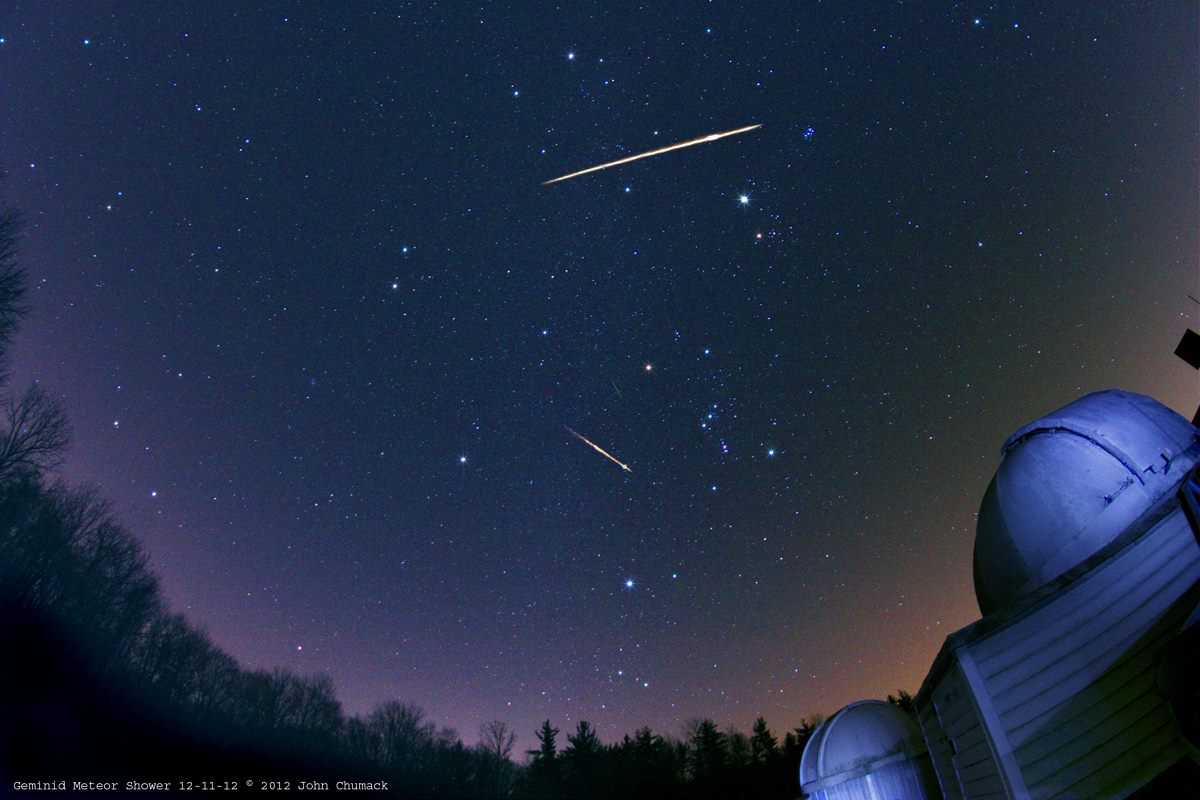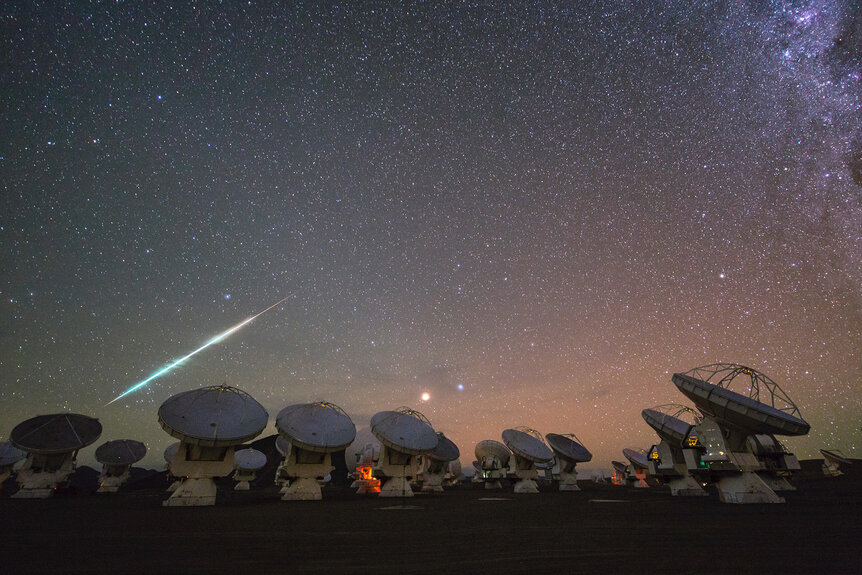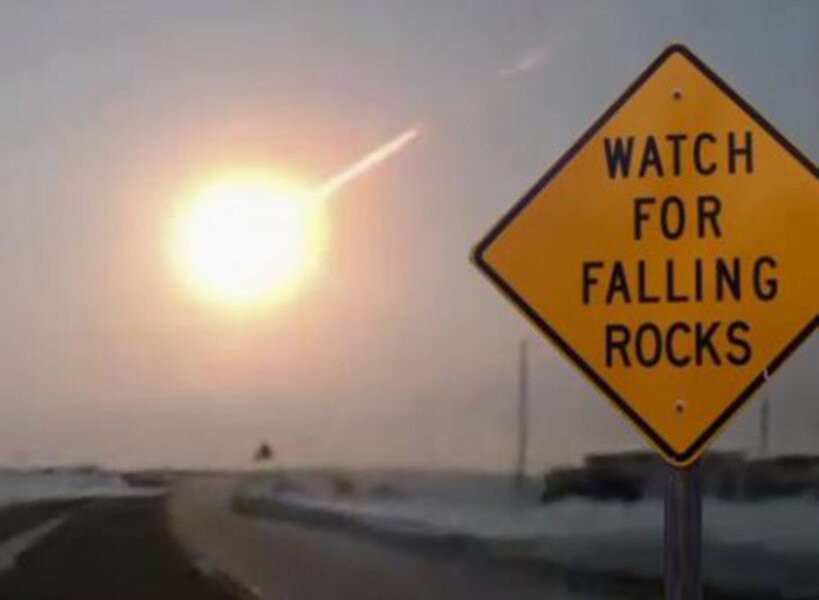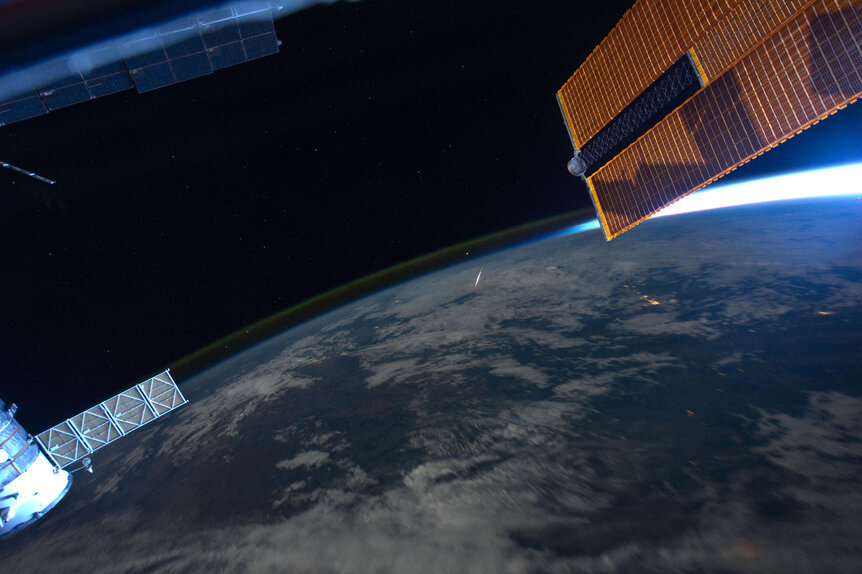Create a free profile to get unlimited access to exclusive videos, sweepstakes, and more!
The sky is falling! Here's how to watch tonight's Perseid meteor shower

As the Earth orbits the Sun, every year around this time it plows through the debris left behind by the comet 109P/Swift-Tuttle. These tiny bits of rock — most no bigger than a grain of sand — slam into our atmosphere and burn up in a second or two a hundred kilometers above our heads. You can usually see one or two meteors per minute if you’re lucky. And if you do, you are witnessing the Perseid meteor shower, one of the best of the year.
The meteoroids (the solid bits of dust/rock) are spread out across a wide region of space, so the shower technically starts in mid-July and lasts until late August, though for most of that time it’s pretty weak. But it peaks over a few days, providing a larger number per hour, so your best bet is to watch during that time. For this year, 2020, the peak is tonight and tomorrow night (the night/mornings of 11/12 and 12/13 August).
In general it’s best to go out after local midnight (literally halfway through the night, so around 01:00) because that’s when the part of the Earth you’re on is facing into the direction of Earth’s motion, increasing the number of meteors; this is the same effect as rain always appearing to come from in front of you when you drive through it in a car.
However, tonight the 3rd quarter Moon rises around midnight and is bright enough to spoil things somewhat. It probably won’t be bad until about 3AM, though, when it’s high enough to light up the sky. Tomorrow night it rises an hour later, so that’s better.
But still, you don’t have to be up at the wee hours to see the meteors. Any time after 10PM should be OK, it’s just that you won’t see as many. Be patient!
So what do you need to do to see them?
You don’t need a telescope, and in fact I suggest you don’t set one up; if you’re looking through the eyepiece you’ll miss the meteors. Instead, you want to be in a place that’s dark and has a wide-open view of the sky — those are the two most important things. Some meteors are faint, so the darker the site the better, and the more sky you can see the more meteors you’ll see. I usually grab a blanket and find a spot far from trees and streetlights. If you have a chaise longue or something like that, even better. Comfort is key.
Also, your eyes take a good 20 minutes to get adapted to the dark, so it’s best to be patient and don’t give up after 15 minutes if you haven’t seen anything! If you have binoculars you can spend that time stargazing a bit. That’s what I usually do.
I’ve written about observing meteor showers many, many times. Here’s my write-up for the 2016 Perseids; ignore the specific dates because those are for that year, but the overall instructions should be helpful. I also have a FAQ there that should answer most of your questions about why we get meteor showers, what they are, how to watch, and more. Other sites with good info include EarthSky, Time and Date, and Sky and Telescope. Another site, MeteorShowers.org, has a cool interactive animation of the shower, too.
There are a few things I want to point out, though, for you to think about as you watch the meteors zipping across the sky.
- These individual grains are moving at about 60 kilometers per second, or nearly 200,000 kilometers per hour. That’s fast. It’s not friction with the atmosphere that burns them up so much as pressure; they ram the air hard, and when you compress a gas it heats up. If I’ve done my math right, a meteor 1 mm in size that burns up in one second gives off very roughly 10–100 Watts of power, which is a lot. That’s why it can look so bright even from a hundred or more kilometers away.
- They’re no danger to us, because they burn up so high in the air. The odds of the Space Station getting hit by one are pretty low, though astronauts have seen meteors burning up below them!
- About a hundred tons of meteors burn up in our air every day. That’s equivalent to a single spherical rock about 4 meters across.
- Did you know you can listen to the shower? The vapor trail left by a meteor reflects radio waves, creating a radio echo that, when translated into sound, can be quite eerie. Here’s a site where you can listen live, and a web search will turn up lots more.
- Meteors tend to streak away from one point in the sky called the radiant. This is the same perspective effect as driving through a tunnel and seeing all the roof lights appearing to come from the vanishing point ahead of you. The location of the radiant on the sky gives the shower its name; in this case it’s in the constellation Perseus. When you see one flash, track the meteor’s path back and it should point toward Perseus. If it doesn’t, it’s likely just a stray meteor, what we call a sporadic.
- The farthest away you can see a meteor (when it’s on your horizon) is a little over 1100 kilometers. But it’s hard to see them that low, so most of the ones you see are much closer, but rarely closer than 90 km (when one burns up directly over you).
- Most meteors look white because they’re not bright enough to trigger the cones in your eye, the cells that detect color. But they do have colors! They correspond to different compositions. Orangey-yellow is sodium, which isn’t hugely abundant in meteors but tends to glow brightly when heated. Green is magnesium, yellow is iron. Can you spot any colors in the meteors you see?
So get out there and take a look if you can! There are several showers during the year, but the Perseids is one of the best; the Geminids in December are actually better but it’s a bit harder to observe in the dead of winter for northern hemisphereans (note: That link to the Geminids has more viewing advice for showers, too).
Meteor showers are lovely and fun for the family. Kids get to stay up late and everyone gets to oooohhh and ahhhhhh when they see one. I hope y’all get to go out and watch the heavens fall.





























